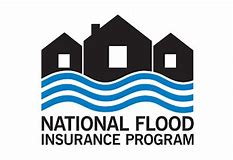South Carolina passes law

Lisa Miller testifying on model flood insurance legislation at the NCOIL Spring Meeting in Nashville, TN, March 15, 2019
So the question remains, how can we make flood insurance more available and affordable to more homeowners? On the heels of a new national private flood insurance model act, South Carolina has become the latest state to enact legislation to encourage a private market. I visited with South Carolina Insurance Director Ray Farmer in his office last October as the bill was being drafted and applaud his leadership in providing consumers greater options beyond the National Flood Insurance Program (NFIP).
Senate Bill 882 becomes effective at the end of November and allows standard and excess to NFIP coverage, “use and file” rates and forms within 90 days of becoming effective, and waiver of diligent effort for surplus lines brokers. Admitted insurers must notify the director at least 30 days before offering flood insurance and file a plan of operation and financial projections as applicable.
The law closely follows the Private Primary Residential Flood Insurance Model Act recently approved by the National Council of Insurance Legislators (NCOIL). We outlined details of the Act in the last newsletter. The Act will provide a streamlined way for more states to create a vibrant private flood market, just as Florida has (with 37 companies) and South Carolina will have. We are continuing our work in other states to use the NCOIL model as a framework and foundation for meaningful private flood insurance legislation. As we say, “if you build it, they will come.”
 Meanwhile, FEMA last week announced key changes for the NFIP effective April 1, 2021. These include updated rate increases to comply with the premium rate caps established by the Biggert-Waters Flood Insurance Reform Act of 2012 and the Homeowner Flood Insurance Affordability Act of 2014 (HFIAA). Policy renewal premiums will increase an average of 10.2%. These amounts do not include the HFIAA Surcharge, or any additional policy fees. FEMA reports nearly 80% of NFIP policyholders pay a full-risk rate and will not experience this rate increase. Also, the NFIP “Flood Insurance Manual,” which is updated twice a year, went into effect on October 1.
Meanwhile, FEMA last week announced key changes for the NFIP effective April 1, 2021. These include updated rate increases to comply with the premium rate caps established by the Biggert-Waters Flood Insurance Reform Act of 2012 and the Homeowner Flood Insurance Affordability Act of 2014 (HFIAA). Policy renewal premiums will increase an average of 10.2%. These amounts do not include the HFIAA Surcharge, or any additional policy fees. FEMA reports nearly 80% of NFIP policyholders pay a full-risk rate and will not experience this rate increase. Also, the NFIP “Flood Insurance Manual,” which is updated twice a year, went into effect on October 1.
In other news, the Flood Resiliency and Taxpayer Savings Act of 2020 was recently introduced in the U.S. House of Representatives by Rep. David Price (D-NC) and Rep. Lee Zeldin (R-NY). It would require federal agencies to consider future flood risks in taxpayer-funded projects and use the best available data for projects in flood-prone areas. The bill delves into design standards in evaluating resilience for or alternatives to federal investments in both critical and non-critical projects, including elevation, hardening, and other mitigation strategies.
LMA Newsletter of 10-12-20

